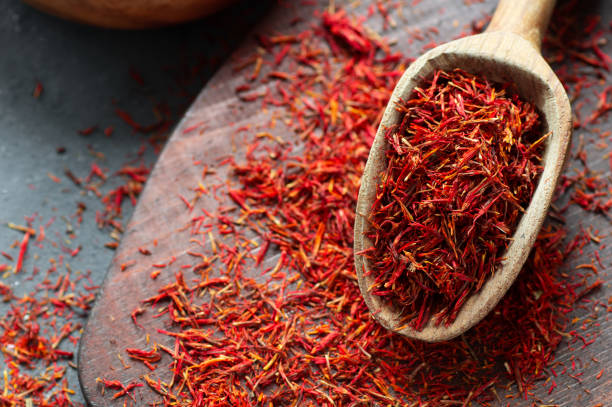Saffron: The Golden Spice That's Worth Its Weight
Discover the allure of saffron, the world's most expensive spice. From its rich history to modern culinary applications, explore how this golden thread elevates dishes and captivates palates across cultures. Uncover the secrets behind its cultivation, flavor profile, and versatile uses in both sweet and savory creations.

A Thread Through History
Saffron’s story is as rich and colorful as its distinctive hue. This prized spice has woven its way through the tapestry of human history for thousands of years. Ancient civilizations revered saffron not only for its culinary applications but also for its medicinal properties and use in dyes. From the frescoes of Minoan palaces to the robes of Persian kings, saffron has left its golden mark. In medieval Europe, saffron was worth its weight in gold, often used as currency. Its value was so great that adulterating or counterfeiting saffron was punishable by death in some regions. Today, while no longer used as legal tender, saffron remains a symbol of luxury and refinement in cuisines around the world.
The Science of Flavor
What makes saffron so uniquely captivating to the palate? The answer lies in its complex chemical composition. Saffron contains more than 150 volatile and aroma-yielding compounds, but three stand out: crocin, picrocrocin, and safranal. Crocin is responsible for saffron’s distinctive golden color, while picrocrocin contributes to its bitter taste. Safranal, which develops during the drying process, gives saffron its characteristic aroma. This unique combination creates a flavor profile that is at once floral, honey-like, and slightly metallic. The taste is often described as earthy with subtle notes of grass or hay. When used in cooking, saffron infuses dishes with a warmth and depth that is truly unparalleled in the culinary world.
Culinary Applications
Saffron’s versatility in the kitchen is truly remarkable. While often associated with savory dishes like paella and risotto, this golden spice shines just as brightly in sweet applications. In Persian cuisine, saffron is a cornerstone ingredient, flavoring everything from rice dishes to ice cream. Modern chefs are pushing the boundaries of saffron’s use, incorporating it into unexpected creations like saffron-infused cocktails and artisanal chocolates. The key to using saffron effectively lies in proper preparation. To maximize flavor extraction, saffron threads should be steeped in warm liquid before being added to a dish. This process, known as “blooming,” allows the saffron to release its full spectrum of flavors and aromas, transforming even the simplest ingredients into something extraordinary.
Beyond the Plate
Saffron’s influence extends far beyond the culinary world. In traditional medicine systems, including Ayurveda and Traditional Chinese Medicine, saffron has been used for centuries to treat a variety of ailments. Modern scientific research is now exploring these traditional uses, with studies investigating saffron’s potential anti-inflammatory, antioxidant, and mood-enhancing properties. In the beauty industry, saffron is gaining popularity as an ingredient in high-end skincare products, prized for its potential to brighten and even skin tone. As interest in natural remedies and ingredients grows, saffron is finding new applications in wellness products, from teas to supplements. This ancient spice continues to captivate and surprise, proving that its value goes far beyond its weight in gold.
Saffron Insights
• Saffron is the stigma of the Crocus sativus flower, with each flower producing only three threads.
• It takes approximately 150 flowers to produce just one gram of dried saffron.
• The world’s largest producer of saffron is Iran, accounting for about 90% of global production.
• Saffron contains carotenoids that may have anti-cancer and antioxidant properties.
• The spice is rich in manganese, which supports bone health and wound healing.
• Authentic saffron should have a deep red color and slightly frayed ends.
• When used in cooking, a little goes a long way – most recipes call for just a pinch.
• Saffron threads should be stored in an airtight container away from light to preserve their potency.
In conclusion, saffron remains one of the most fascinating and cherished ingredients in the culinary world. Its complex flavor profile, rich history, and myriad applications continue to inspire chefs and food enthusiasts alike. As we look to the future, saffron’s role in gastronomy, wellness, and beyond is only set to grow, ensuring that this golden spice will remain a treasure for generations to come. Whether you’re a seasoned chef or a curious home cook, exploring the world of saffron offers a journey of discovery that is truly worth its weight in gold.





